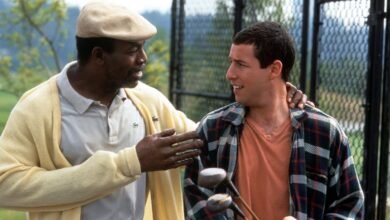Stitching Together Chicago White Sox’s Decision To Not Trade Garrett Crochet
There are general managers who firmly believe the best moves are the ones you don’t make.
For proof that method works, just look at how the St. Louis Cardinals passed on paying Albert Pujols for the watermelon rind of his career that the Los Angeles Angels shelled out for, then got a great bonus year from him on his way to retirement and Cooperstown.
Then there are general managers—think A.J. Preller in San Diego—who think it’s a sin to not do something in any circumstance. Preller isn’t Frank Lane, who in the 1950s and 1960s traded for the sake of trading at the expense of helping his team win, but status quo isn’t his pal.
Once again, the Padres are going for it.
They traded seven prospects for relievers Jason Adam and Tanner Scott, the dictionary definition of overpay. But if Preller’s largesse leads to a World Series trophy being paraded around Petco Park in October, well, you know what they say about flags flying forever.
But this isn’t about the teams that made moves to get better. It’s about a team that could have made all kinds of moves and did make a few but didn’t make the big one that would have made sense for years from now.
Look, I can understand why the Chicago White Sox didn’t deal Garrett Crochet at the trade deadline. Left-handers who can throw 100 mph don’t grow out of the ground, even in these days of hyping spin rate over pitchability and raw velocity over durability.
Crochet was the team’s only All-Star Game representative. His 6-8 record would probably be 10-4 on even a .500 team. The White Sox, working hard at displacing the 1962 New York Mets from the record book for most losses in a season, are as far away from .500 as they are from Seattle.
But as Branch Rickey once said when he denied Ralph Kiner’s request for a big pay raise with the pitiful ‘50s Pirates, “We finished last with you. We can finish last without you.”
Chicago would finish last with or without Crochet.
That’s why the White Sox, even though Crochet’s representatives came out near the deadline and declared that he wouldn’t pitch in the postseason without first receiving a contract extension, should have made more of an effort to trade him.
Maybe they should have rung up Preller and sold him on Crochet as the missing piece instead of allowing Miami to get three of San Diego’s top five prospects.
So what if Robby Snelling can’t throw strikes and Adam Mazur hasn’t yet learned to trust his stuff?
Look, prospects are prospects for a reason. As someone once said, potential is Frehch for “you haven’t done a damn thing yet.” But Chicago is 27-84, even though it has Crochet blowing away hitters every fifth day. He had 141 strikeouts by the Fourth of July. He’s done his part and more than proven his value.
No, you aren’t trading Crochet for 15 cents on the dollar.
The White Sox do have a top-10 farm system.
But in the middle of what could be a long, painful rebuilding project on the South Side, hanging on to your top asset so that you might win more games than the ’62 Mets this year doesn’t appear to be the quickest way to accelerate the process.





